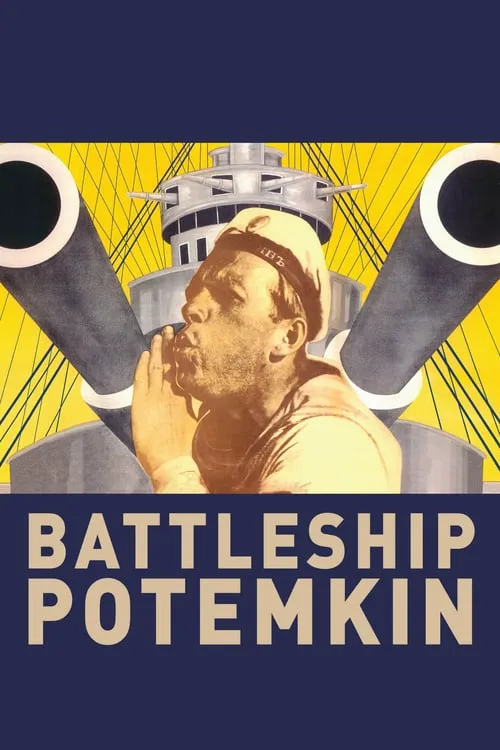Battleship Potemkin

Plot
Directed by the Soviet master Sergei Eisenstein, Battleship Potemkin is a groundbreaking silent film that chronicles the 1905 Russian Revolution's most pivotal event – the mutiny on the battleship Potemkin. Released in 1925, the film's impact on the development of cinema was monumental, introducing innovative techniques that redefined the art of filmmaking. Battleship Potemkin's story is both a dramatic account of the mutiny and a scathing critique of the Romanov dynasty's oppressive regime, which paved the way for the rise of Soviet Cinema. The film begins with the introduction of the Potemkin, a Russian battleship anchored in Odessa harbor. Among the crew is a young drummer boy, Vakulinchuk, whose sympathetic portrayal serves as a narrative thread throughout the story. The drama unfolds as tensions between the sailors and their officers escalate, sparked by a disagreement over living conditions and food quality. As discontent mounts, Vakulinchuk, now a champion of the working class, rallies his fellow sailors to demand better treatment. The Potemkin's commander, Captain Giliarovsky, attempts to quell the rebellion by ordering the sailors to fall in and stand down. The standoff, which sets the stage for the rest of the narrative, results in a confrontation between the sailors and their officers. As Vakulinchuk stands up for his rights, the crew is met with cruel punishment, culminating in Vakulinchuk's brutal murder by a Russian officer. Enraged by his death, the crew finally mutinies, taking control of the ship. The subsequent events unfold as an intense drama, as the battleship, along with its loyal crew, becomes a symbol of resistance against the oppressive regime. The government, determined to quell the rebellion, sends a team of warships to capture the mutineers. A battle ensues, culminating in a pivotal moment where a Russian officer, intent on capturing the Potemkin, orders a barrage of shells to be fired at the rebellious sailors. This brutal act leads to Vakulinchuk's ghost, along with other fallen sailors, symbolically avenging their murder in a climactic scene. In a remarkable example of montage editing, Eisenstein uses a series of jarring images, accompanied by a discordant soundtrack, to convey the brutality of the massacre. Through this juxtaposition of graphic violence, death, and chaos, the audience is compelled to empathize with the suffering of the sailors and condemn the brutal regime. Battleship Potemkin then shifts to the streets of Odessa, where protests turn violent as Russian soldiers are ordered to quell the uprising. A confrontation between the government forces and civilians occurs, resulting in a brutal massacre. This heart-wrenching sequence serves as a stark example of the Romanov regime's willingness to use force against its own people. Eisenstein's direction reaches new heights in the final scenes of the film, as the Potemkin, with its rebellious crew, becomes a beacon of hope for the working-class citizens of Odessa. Despite the ship's eventual return to Soviet control, the spirit of resistance embodied by the Potemkin's sailors remains unbroken. The film ends on a triumphant note, as the surviving sailors, who bravely stood up for their rights, are reunited with their comrades who had fled the battleship after the mutiny. As the sailors stand united, shoulder to shoulder, the audience is left with a sense of solidarity and defiance in the face of oppression. Battleship Potemkin's impact on world cinema extends beyond its cinematic innovations – it serves as a timeless monument to the power of the human spirit and its struggle for freedom and equality. Battleship Potemkin, now considered a landmark of cinematic history, continues to inspire artists and filmmakers, offering a powerful reminder of the importance of storytelling in bringing about social change. Its unforgettable scenes, innovative editing techniques, and the unwavering message of resistance continue to captivate audiences worldwide, cementing its place as one of the most influential films in cinematic history.
Reviews
Recommendations




